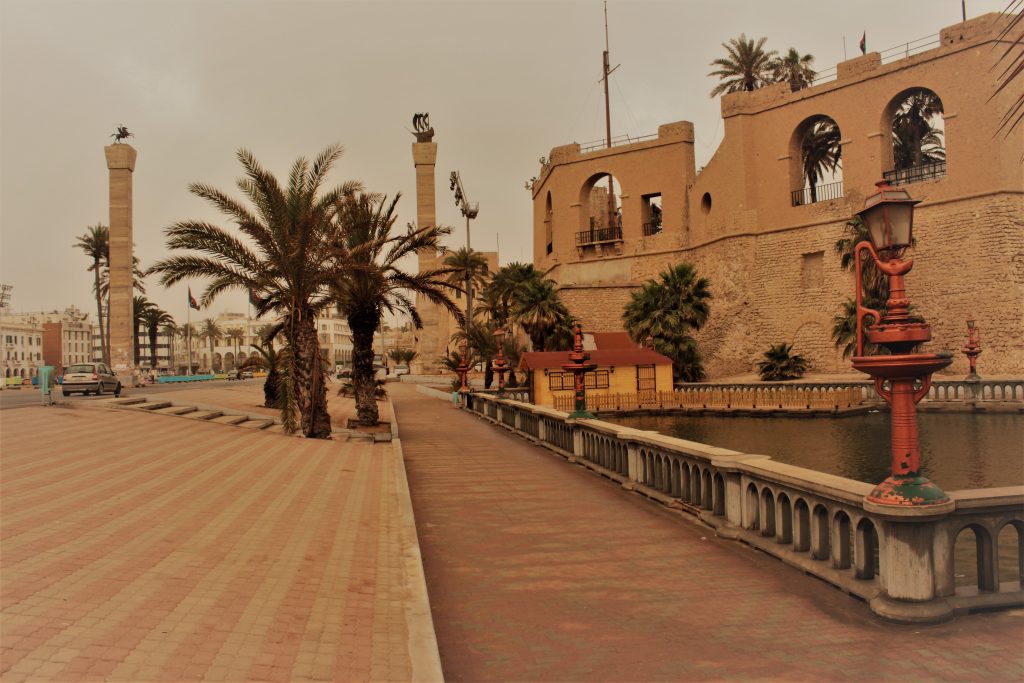The Best Tripoli Attractions
Tripoli – Libya
The city was known as Oea in ancient times and was one of the original cities (along with Sabratha and Leptis Magna) that formed the African Tripolis, or Tripolitania. Occupying a rocky promontory overlooking the sea and located due south of Sicily.
The city was founded by the Phoenicians and later controlled by the Romans (146 BCE until about 450 CE), the Vandals (5th century), and the Byzantines (6th century). During the invasions by the Vandals the walls of the cities of Sabratha and Leptis Magna were destroyed, and this resulted in the growth of Tripoli, which had previously been the least important of the three cities. In 645 the city fell to Arab Muslims led by ʿAmr ibn al-ʿĀṣ, and it subsequently remained under Arab control (except from 1146 to 1158, when it was taken by Sicilian Normans).
It was stormed by the Spanish in 1510 and was conquered by the Turks in 1551, after which it was made a colonial capital of the Ottoman Empire. From 1911 to 1943 it was in Italian hands, and from then until Libya’s independence in 1951 it was occupied by the British.
The city is divided into old and new quarters. The ancient walled city, or medina, lies along the harbour and is dominated by a 16th-century Spanish castle.
The old quarter contains the marble Marcus Aurelius triumphal arch (163 CE) and the mosques of Gurgi (1883) and Karamanli (18th century), with its distinctive octagonal minaret. The al-Nāqah Mosque, or “Camel” Mosque, dates from the Middle Ages to the 17th century. Many historical structures benefited from restoration programs in the late 20th century.
The modern city, which experienced rapid growth from the 1970s, contains many of the official buildings, theatres, and hotels, as well as the former royal palace (later called the People’s Palace), which houses a library. Universities in Tripoli include Al-Fāteḥ University, founded in 1957 and previously part of the former federal University of Libya before its split in 1973, and Open University, founded in 1987. Libya’s Department of Antiquities, which oversees the country’s museums and archaeological sites, is also located in Tripoli, as are the national archives, several research centres, and the majority of the country’s publishing houses.
The Best Tripoli Attractions
Red Castle Museum
The Red Castle Museum is one of the most visited sites in Tripoli. Set in the heart of the city, this museum is dedicated to five thousand years of history and culture and well worth a visit when in the city.
This museum has four wings, the natural history wing, the prehistory wing, the Berber tribes wing and the Punic Roman traditions wing.
The Peoples Era Wing was added in the late 1960’s just after Gadaffi’s arrival. This wing is dedicated to the country’s fight for independence.

Marcus Aurelius Arch
This is probably the most famous monument in Tripoli. The Arch dates back to 163AD and is still in excellent condition. You’ll be amazed at the beauty of this monument.

As you approach the Marcus Aurelius Arch from the seaside, you may at first not be impressed by this monument. However, as you begin to walk down into the garden area and around the Arch, you will be amazed that this is a piece of history, two thousand years old. For those on a tour of Libya, you will spend a short time at the Arch before heading to the National Museum.
Martyrs Square

This square is also known as Green Square and is a huge square in the heart of the city which is home to a large fountain and the Red Castle Museum to the one side. The square is used for gatherings and other traditional festivals.
The Medina

The Medina is a must to visit when in Tripoli. This old town is a maze of passages and alleys where you can soak up the architecture, see some of the historical buildings and be amazed by the beauty of the mosques. You’ll also find the souks, traditional markets, where you can buy a host of traditional items to take home with you from leather goods to jewelry from fun stall owners who are ready to barter on price.

